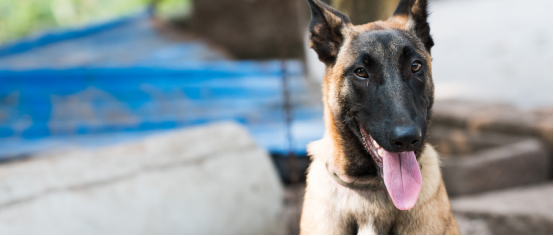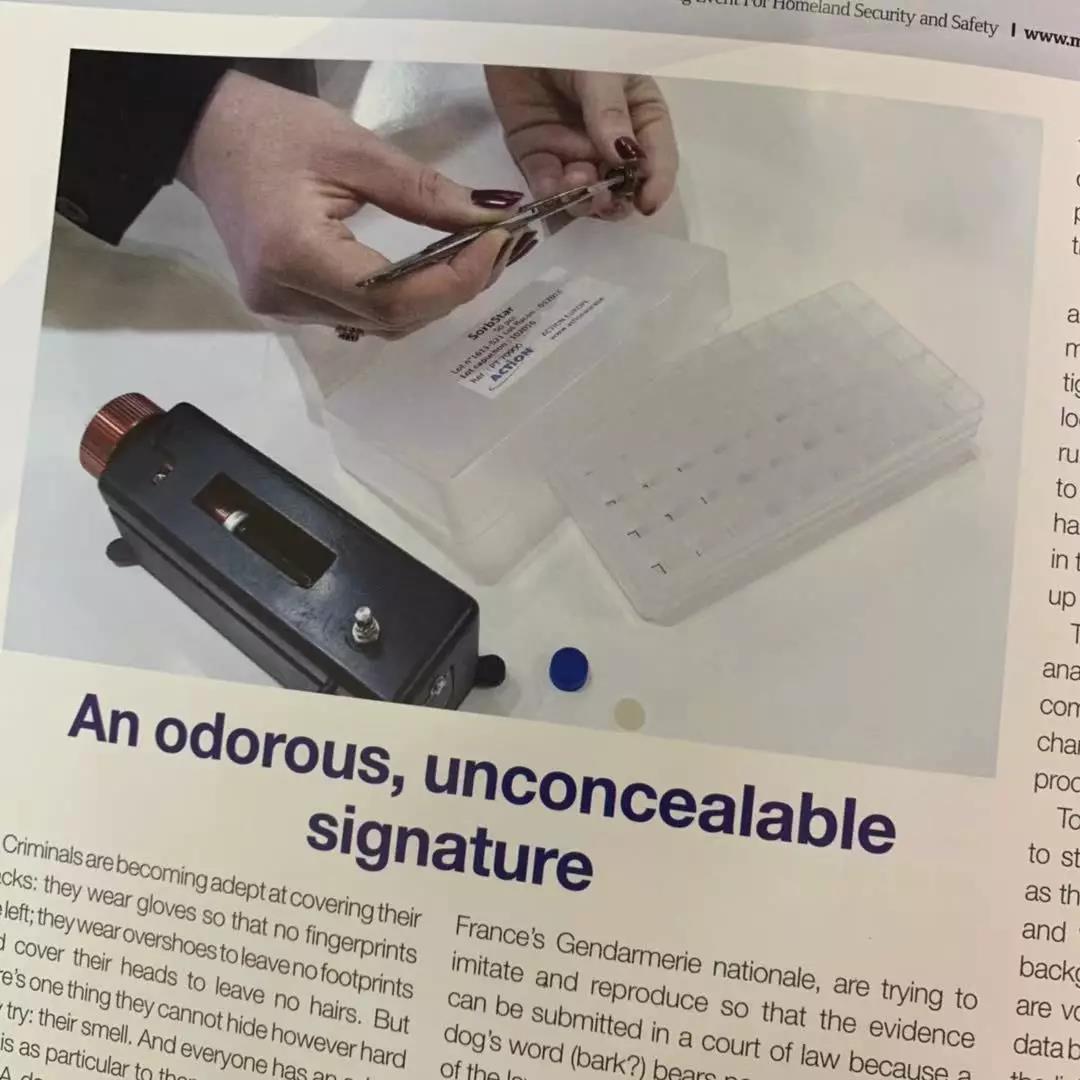气味指纹,无法隐藏的证据

犯罪分子越来越善于掩盖自己的踪迹:他们戴手套,以免留下指纹;他们穿套鞋,不至于留下脚印;他们遮住头部,不留毛发。但是无论多么狡猾,有一样东西却是掩盖不了的,那就是他们的气味。如指纹的独特性,每个人都有一种独特的气味,即使这种气味已经过了好几天,并且被香水和其他气味掩盖,狗也可以闻出这种气味。

狗是无法上庭作证的,因此包括法国宪兵队在内的世界各地的许多执法团队都在试图模仿和复制狗的这种能力,以便可以将气味作为证据提交至法庭。
化学工程师奥黛丽·西津(Audrey Sizun)就该主题撰写了论文,她解释说,人的气味有三个层次,第一种也是最主要的气味是由遗传产生的;第二种气味受人的整体健康、压力水平以及所吃食物的类型影响;第三种气味是由人所使用的如香水、除臭剂、肥皂、护肤霜等外部物质散发出来的。

制造商Action Europe公司研发出一种“魔术棒”可以提取气味分子,其成分仍然严格保密中。这种聚合物棒看上去很像一个微小的胶棒,可以用它摩擦嫌疑人触摸过的物体,也可以将它放在小型的手持设备中,用设备吸入嫌疑人呆过的房间中的空气,并从空气中提取气味分子。 在对这些气味分子经过复杂的分析后,将形成一张晦涩难懂的图表。每个人的这种化学图表都是唯一的,因此可以作为呈堂证供。
为了建立类似指纹数据库一样的“气味数据库”,以便帮助识别特定的遗传标记,很多具有不同种族、不同地域、不同肤色和发色的男性和女性自愿贡献他们的气味。该数据库可能会有助于缩小潜在犯罪嫌疑人的范围。例如,如果犯罪现场发现的气味与凯尔特人的白皮肤红发女性或亚洲人的浅棕色皮肤黑发男性的标记相配,那么就可以将潜在的犯罪嫌疑人缩小至拥有这些标记的人。
目前,该系统仍在开发中,但研究小组希望到2022年能够商业化应用。
本文翻译自2019年Milipol会刊《Milipol News》第三册(Issue#3)刊登的文章,原标题为:An odorous, unconcealable signature.
附原文:
An odorous, unconcealable signature
Criminals are becoming adept at covering their tracks: they wear gloves so that no fingerprints are left; they wear overshoes to leave no footprints and cover their heads to leave no hairs. But there's one thing they cannot hide however hard they try: their smell. And everyone has an odour that is as particular to them as their fingerprints are.A dog can pick up this smell, even if it's several days old and has been masked by perfumes and other odorous sprays.
And it is this canine ability that a number of law enforcement teams across the world, including France's Gendarmerie nationale, are trying to imitate and reproduce so that the evidence can be submitted in a court of law because a dog's word (bark?) bears no weight in the eyes of the law.
Audrey Sizun, a chemical engineer who has written scientific papers on the subject explains that there are three levels of odour secreted by people. The first is the primary odour, which is genetically generated. Then there is the secondary odour, the result of the person's overall health, their stress levels, the type of food they eat. Finally, the third level of odour is emitted by external factors such as the perfumes, deodorants, soaps, skin creams that the person uses.
The odour molecules are picked up by a " magic stick" whose components its manufacturer, Action Europe, are keeping a tightly held secret. The polymer stick, which looks much like a tiny glue stick, can either be rubbed on an object the person one is trying to identify has touched or are put in a small hand-held device that sucks in the ambient air in the room that person has been in and picks up the odour molecules from the air.
The molecules then undergo a complex analysis and a chart, incomprehensible to a common mortal, is produced. And that chemical chart is unique to each person and could be produced in a court of law.
To help identify particular genetic markers to start setting up an "odour data base" just as there exist vast fingerprint data bases, men and women of different ethno-geographical backgrounds, with different skin and hair colours are volunteering their odours to help set up a data base of"marker" odours.
This could narrow the list of potential suspects: for example if the odours picked up on the scene of the crime match the markers of a white red-headed female of Celtic background, or of a light brown-skinned, dark-haired male of Asian background, then that would narrow the potential suspects down to people who have these markers.
The system is still under development but the team hopes to have something useable by 2022.











